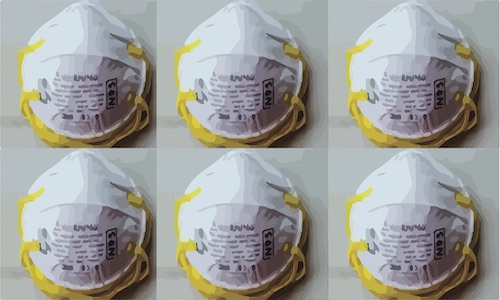Reflections by Philip Kuehl and Jacob McDonald, Lovelace Biomedical
What a year! 2020 was the year when those of us in aerosol science were forced to stop compartmentalizing. It was the year that we could no longer keep our work lives separate from our personal lives – our work spilled over into our personal lives on a daily basis. 2020 was the year that the COVID-19 pandemic made the respiratory tract a topic of dinner conversations, news radio, blogs, podcasts, etc. Being a respiratory biologist, immunologist, toxicologist, or drug delivery expert became the equivalent of being a rock star in past years. Given the pervasive public concern about prevention, transmission, and treatment of the SARS-CoV-2 virus, everything we do at work suddenly became relevant to our daily lives.
Early on in the pandemic, it became clear that SARS-CoV-2, the virus that causes COVID-19 disease, was highly contagious and nothing like we have had to deal with before. As a result, understanding how SARS-COV-2 is transmitted from person to person became a priority. Here at Lovelace Biomedical, we have plenty of experience studying infectious diseases, including SARS-CoV-1, but SARS-CoV-2 was different – instead of worrying only about containment of infectious disease within our labs, we also had to worry about one getting in from outside.
As soon as the scope of the pandemic became clear, we met as a team to address how to handle everything from PPE requirements to additional cleaning procedures to what staff would be considered essential to whether to run at full capacity. But at the outset, we had little information to inform our decisions on how to stay safe and how to keep the labs running.
With many health officials initially focused on fomite and droplet transmission, aerosol scientists soon jumped in to demonstrate that aerosols play a major role. Analyses of outbreaks like the Skagit choir superspreader event helped to convince authorities that aerosols were indeed implicated in transmission, and studies soon showed that health care workers were at risk and that utilization of proper personal protective equipment (PPE) reduced the risk of transmission.
Demand for albuterol soared due to its use for COVID-19 patients. At the same time, many clinicians worried that the use nebulizers could contribute to the spread of the virus, members of the International Society of Aerosols in Medicine (ISAM) published guidelines to reduce any risk posed by inhaled drug delivery. Aerosol researchers also demonstrated that breathing alone was sufficient to generate aerosols, making ventilation, physical distancing, and mask usage critical to disease prevention.
Our own experience at Lovelace seems to validate the usefulness of prevention measures indicated by those studies. Over the past year, every single person who enters our facilities has been asked to change into clothes we provide and to wear a surgical mask or N95. Because working with chemical, nuclear, and biological hazards is part of our normal work, the vast majority of our staff were already trained to minimize risk. We used our experience with our high containment labs to institute heightened cleaning practices throughout the facility. And we had ventilation systems set to provide 10-12 air changes per hour. Thanks to these precautions, we have not had a single case of transmission inside our facility and have not had to delay or postpone a single study due to infection among our employees.



